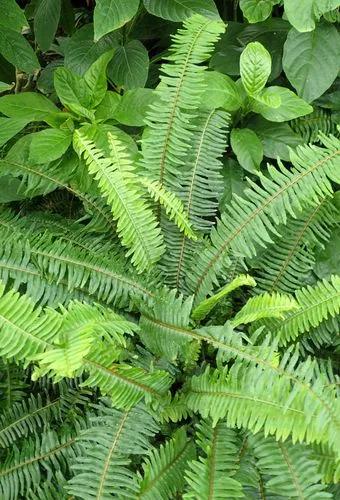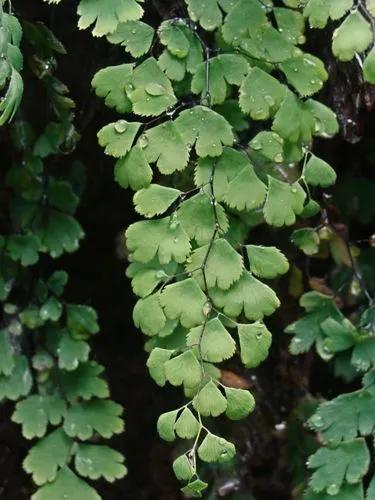Adiantum capillus-veneris is native to the southern half of the United States from California to the Atlantic coast, through Mexico and Central America, to South America. It is also native to Eurasia, the Levant in Western Asia, and Australasia. There are two disjunct occurrences in the northern part of North America: at Cascade Springs in the Black Hills of South Dakota and Fairmont Hot Springs, British Columbia. In both instances, the warm microclimate created by hot mineral springs permits the growth of the plant far north of its normal range. It is similar in Zvonce spa resort (Звоначка Бања, Zvonačka Banja), near Pirot in Serbia, where hot mineral springs provide adequate heat and humidity for the survival of this species. It is found in temperate climates from warm-temperate to tropical, where the moisture content is high but not saturating, in the moist, well-drained sand, loam or limestone of many habitats, including rainforests, shrub and woodlands, broadleaf and coniferous forests, and desert cliff seeps, and springs. It often may be seen growing on moist, sheltered and shaded sandstone or limestone formations, generally south-facing in the southern hemisphere, north-facing in the north, or in gorges. It occurs throughout Africa in moist places by streams. On moist sandstone cliffs it grows in full or partial shade, even when unprotected. Adiantum capillus-veneris grows from 6 to 12 in (15 to 30 cm) in height; its fronds arising in clusters from creeping rhizomes 8 to 27.5 in (20 to 70 cm) tall, with very delicate, light green fronds much subdivided into pinnae 0.2 to 0.4 in (5 to 10 mm) long and broad; the frond rachis is black and wiry.
Adiantum Capillus Care
Adiantum Capillus



How to Care for the Plant

Water

Your best bet when it comes to ensuring your maidenhair fern thrives is to focus on multiple water sources for this thirsty species. Consistently moist soil is a great place to start—from there, be sure to water your fern consistently, either daily or every other day, never allowing the soil to dry out. Keep the fern in a plastic pot with holes, then place the plastic pot in a more attractive outer pot if you wish. This way, you can easily check on the moisture levels in the plastic pot, and the drainage holes will prevent the soil from becoming too soggy.

Pruning

Some gardening advice recommends burning the dead foliage of maidenhair ferns. While it may be successful, it can also be rather dangerous so it is preferable to cut away the dead foliage as directed above.

Fertilizer

It's not necessary to fertilize a maidenhair fern, as the plant will do just fine without it. However, if you wish to provide it with an added dose of nutrients, feed with a balanced, diluted blend once a month, avoiding any feed with too much nitrogen (200 ppm or less), which can cause the tips of the leaves to burn. Additionally, regular trimming and the removal of browned leaves can also help the fern grow denser foliage.

Sunlight

Semi-shade to full shade with preference to bright indirect light or dappled sunlit areas.

Soil

A soil mix consisting of 2 parts peat moss to 1 part loam to 2 parts sand is recommended, with 2 tablespoons of ground limestone (for every 15cm (6 inch) pot)

Temperature

Temperature: Adiantum capillus-veneris will grow well in any normal room temperature and can tolerate temperatures down to 10oC (50oF). If the temperature rise above 24oC (75oF), stand pots on trays of moist pebbles and moist daily to provide much needed humidity.

Additional

A-induced hepatic toxicity in male albino rats. Adiantum capillus-veneris, commonly called southern maidenhair fern, is a deciduous, clumping fern with a drooping habit that grows to 12-18” tall and slowly spreads by short creeping rhizomes. It features bipinnate to tripinnate fronds with wiry, black stems that are distinctively arching to pendent.

Popularity

624 people already have this plant 84 people have added this plant to their wishlists
Discover more plants with the list below
Popular articles






